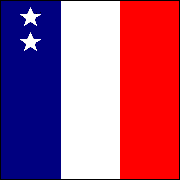FRENCH REPUBLIC
NAVAL ENSIGNS & FLAGS • ERA OF THE GREAT WAR
















